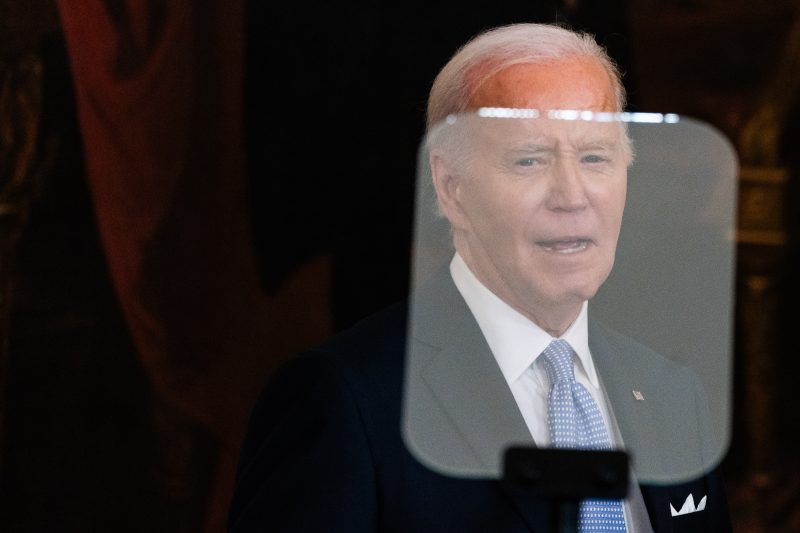In today’s fast-paced world where public figures are constantly under scrutiny, every detail of their lives is subject to analysis. One such figure who has been the center of attention is US President Joe Biden, and there is one aspect of his public appearances that has been the subject of much discussion and debate – his omnipresent accessory, the teleprompter.
A teleprompter is a device that displays a speaker’s script or notes in large, easily readable text, allowing them to deliver speeches or presentations without having to memorize their lines. While teleprompters are commonly used by public speakers, politicians, and news anchors, their prominent presence during Biden’s public appearances has raised questions about his ability to communicate effectively without external assistance.
Critics argue that Biden’s reliance on a teleprompter undermines his authenticity and suggests that he is not capable of speaking off-the-cuff or addressing the public without pre-written scripts. They point to instances where Biden has appeared to struggle or stumble during unscripted moments, reinforcing the idea that he is dependent on the teleprompter to convey his message.
Supporters, on the other hand, defend Biden’s use of a teleprompter as a practical tool that helps him stay on message and deliver speeches more effectively. They argue that in today’s media-driven environment, where every word uttered by a public figure is subject to intense scrutiny and interpretation, using a teleprompter ensures that Biden communicates his intended message clearly and accurately.
The debate over Biden’s teleprompter use reflects larger questions about leadership, authenticity, and communication in the digital age. In an era marked by rapid technological advancements and the proliferation of social media, public figures like Biden must navigate a complex media landscape where every word and action is amplified and dissected in real-time.
Ultimately, whether one views Biden’s teleprompter use as a crutch or a necessary tool may depend on one’s perspective and expectations of leadership. In a world where optics and image management are paramount, the teleprompter has become an integral part of how politicians and public figures present themselves to the public, for better or for worse. As society continues to evolve and adapt to new forms of communication and technology, the role of tools like the teleprompter in shaping public discourse and perception will undoubtedly remain a topic of ongoing debate and discussion.
